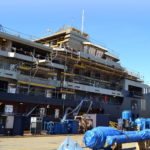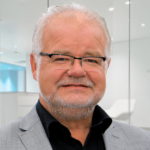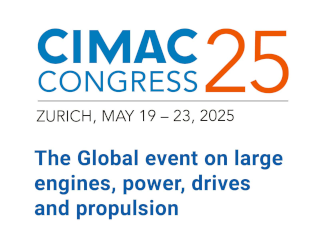The Norwegian maritime sector has been hit hard by the shipping crises and the oil price decline. Asle Strønen, Managing Director at Norwegian shipbuilders’ sales and marketing organisation Norske Skipsverft, shares his view of how the sector is doing today
What are the current challenges for Norwegian shipbuilders?
Asle Strønen: With very good orderbooks the Norwegian shipbuilders have[ds_preview] to tackle technologically driven and environmentally demanding customers who rely on our domestic yards when it comes to quality, price and delivery punctuality. Norwegian shipowners are focused on low or zero emission technology. We see a trend of owners of small fishing boats and even up to large car ferries requiring sustainable solutions. Our objective is to help our customers to achieve their goals.
How does the order book look today?
Strønen: We are as a trade organization the hub for every enquiry regarding newbuilding, conversion or maintenance of all kinds of ships. Our member yards are located along the whole coastline of Norway and represent in-depth experience and know-how. Each yard works independently and on its own terms during the tendering procedure, in full competition with the other members. At present the total orderbook of the Norwegian shipyards consists of more than 100 new buildings at a total value in excess of 50 bn NOK. This means that the order book has increased steadily since the crisis a few years ago. While building of advanced offshore vessels dominated the order book from 2000 to 2014 these are now absent from the lists. These days it’s expedition cruise ships, offshore windfarm service ships, electrical ferries, fishing vessels, wellboats and smaller service boats for the aquaculture sector that keep the yards busy.
How does the shipyard landscape in Norway look today, compared to the pre-crisis years?
Strønen: The shipyard landscape in Norway is very differentiated. We have four large groups (VARD – with several yards, Ulstein Yard, Kleven Yard and the yard Havyard Ship Technology). In the mid-range there are for example Aas Mek. Verksted, Fitjar Mek. Verksted, Fiskerstrand Verft, Baatbygg, Stadyard, Larsnes Mek. Verksted and Oma Baatbyggeri. In addition, highly specialized yards as Oma Baatbyggeri and Grovfjord Mek. Verksted deliver very high-end vessels within their segments.
We have not had many close-downs (just one I believe), but some consolidations has happened. The most known is the Kleven Group which under new ownership and management is reduced to the Kleven Yard itself (building of new Hurtigruten ships) while former member of the Kleven Group the Myklebust Yard now is an independent business.
What are the strategies of the domestic shipbuilding sector in the current market environment?
Strønen: Due to high labour costs we have to focus on the building of advanced vessels, whether it is a smaller »workhorse« for the aquaculture sector or a hybrid-fuelled fishing vessel for the high north. Our power is the building of advanced vessels. We cannot compete with low-cost countries and therefore have to focus on specialized and advanced vessels.
What are the recent trends and developments in terms of customer demand?
Strønen: Recent trends are low or zero emission technology. The fisheries sector is very important for the Norwegian yards.
What role does repair and conversion play besides newbuilding activity?
Strønen: Repair and conversions is very important. And this is valid for all kind of vessels. Our coastline is very long with thousands of vessels spread all along the Norwegian coast. Geographical proximity to the market (with yards from north to south) ensures good contract volume.
Vard has been taken over by Fincantieri, Kleven belongs to Hurtigruten, Fosen took over Nordseewerke in Germany – will Norwegian Yards become more nationally or internationally involved?
Strønen: In my opinion Norwegian yards will rather become more nationally involved than international in relations to ownerships and takeovers.
What is your outlook, where do you see opportunities?
Strønen: Our best business opportunities lie within new technologies for the ferry and fisheries sectors. With regards to offshore, I don’t see a comeback with regards to new buildings, but there will be some conversions to be done. Cruise ships/ferries are already the »next« big thing for the Norwegian yards.
Interview: Felix Selzer



















